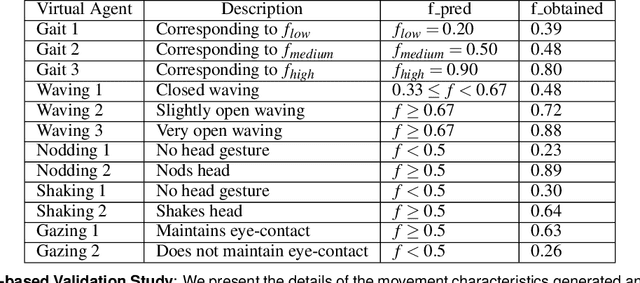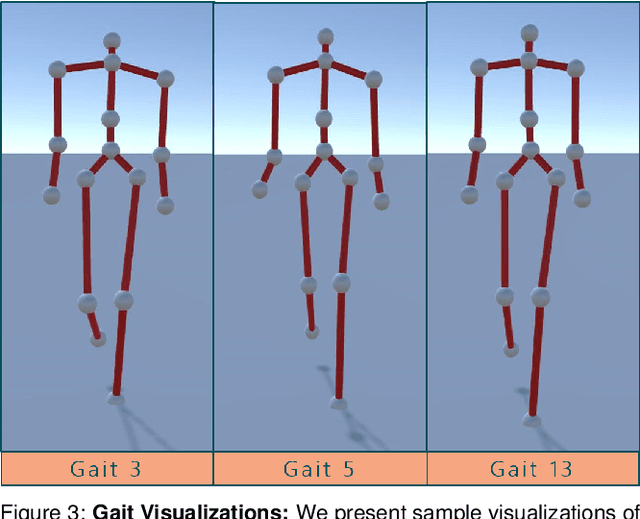FVA: Modeling Perceived Friendliness of Virtual Agents Using Movement Characteristics
Paper and Code
Jun 30, 2019



We present a new approach for improving the friendliness and warmth of a virtual agent in an AR environment by generating appropriate movement characteristics. Our algorithm is based on a novel data-driven friendliness model that is computed using a user-study and psychological characteristics. We use our model to control the movements corresponding to the gaits, gestures, and gazing of friendly virtual agents (FVAs) as they interact with the user's avatar and other agents in the environment. We have integrated FVA agents with an AR environment using with a Microsoft HoloLens. Our algorithm can generate plausible movements at interactive rates to increase the social presence. We also investigate the perception of a user in an AR setting and observe that an FVA has a statistically significant improvement in terms of the perceived friendliness and social presence of a user compared to an agent without the friendliness modeling. We observe an increment of 5.71% in the mean responses to a friendliness measure and an improvement of 4.03% in the mean responses to a social presence measure.
 Add to Chrome
Add to Chrome Add to Firefox
Add to Firefox Add to Edge
Add to Edge